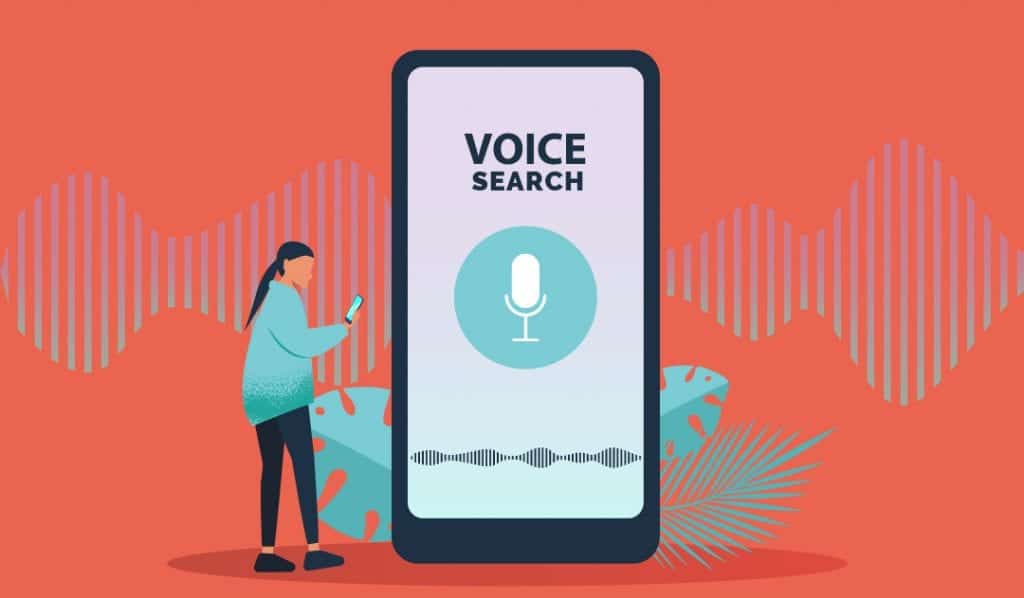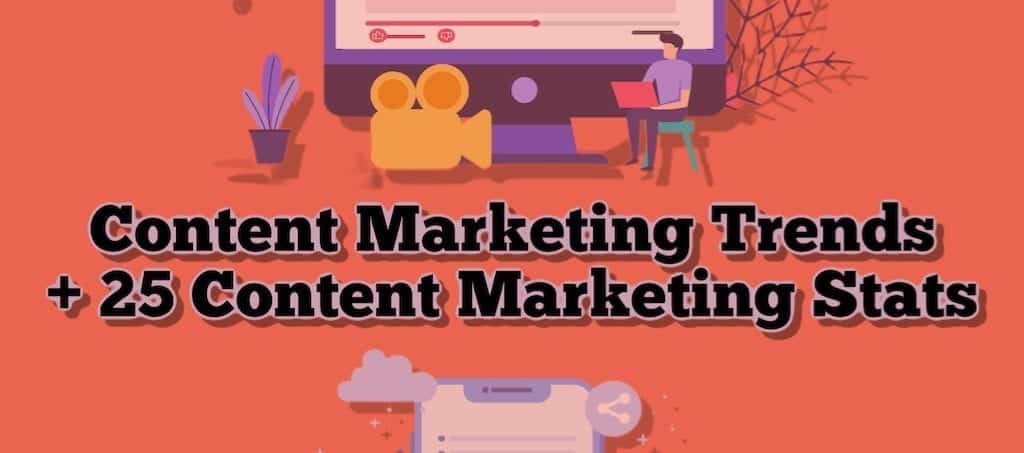Introduction
This year has been a year of change, and that’s putting it lightly. Content marketing has been on the rise since the invention of the internet anyways and has continued to evolve as the medium has reached its adolescence. For over two decades now, content creators have had the unparalleled ability to put their products and/or service in front of interested parties, and the social upheaval of 2020 has only seen more people rely on the internet and internet-based content than ever before.
This presents many new opportunities for content marketers as the industry continues to evolve going forward. With all of this in mind, we think it’s the best time to take stock of marketing trends, both ongoing and emerging, so savvy marketers know which area to keep an eye on for content promotion opportunities.
We’ll start by going through about nine of these trends, explaining what they are and how you can implement them in your own business. We’ll then finish with twenty-five shorthand content marketing stats that every marketer should keep in mind. If you’re interested in further reading, we’ve included references to where we’ve aggregated all of this information from.

Video and Livestream Content Dominates
This one shouldn’t be too much of a surprise. It’s a slow-cooking trend that has been in play since the internet first became mainstream and is largely based on the meteoric rise of platforms like YouTube.
There has been a consistent, drastic shift in how younger people consume content, with many preferring online content over cable.[2] Many YouTubers pull in more views than entire cable organizations on a regular basis, creating a fertile advertisement base for those who market online. A big exception is streaming services, where traditional TV shows and movie entertainment is consumed by the younger demographics more than cable.
Videos often stay up on their platforms for long periods of time, too, allowing them to circulate so that more people can see them, which is why there is a growing trend of advertisements being buried within the video itself.
With all of this in mind, it seems that brands are expected to produce video content of some form.[3] Failing this, live stream content has also become more popular. It’s become popular in many communities online, particularly through video gaming, but where brands are concerned, over 80% of consumers would rather see a live feed from a company over a static blog post.[4]
This means that companies should focus on video-format user-generated content, whether that’s live or pre-recorded, to garner interest online. These can be reviews of your product or service, including testimonials and demonstrations, as well as Q&A sessions and other interactive content that engages the audience and shows them that show what your brand is about.
Target video-hosting platforms and social media, from Facebook and Vimeo to Facebook and Snapchat. Having your own site that you can also host this content on, and link to it when your content is featured on other platforms is a plus. If you have more traditional avenues of marketing, you’ll be happy to know that it’s quite easy to convert video content into either written copy or audio-based content, speaking of which…
Podcast Listeners Continue to Soar
Audio-based content, in the form of podcasts, has also seen an increase alongside video-based content. In the last decade, the number of people who have engaged with podcasting content has doubled.[5] This number is only predicted to grow, especially as more recognize the trend and jump in on the action themselves.
It’s an especially accessible medium for those on the go, with many using podcasts as background listening whilst they work or perform other tasks. A larger listenership is one thing, but it also seems that the nature of the engagement itself has changed with audiences becoming more likely to engage with the content connected to the podcasts they’re interested in.[6]
As we explained above, it’s pretty easy to transform video-based content into audio-based content, so it’s worth doing if you’re already producing videos. There still should be intentionality behind your podcasts, however. The worst podcasts are those that are unplanned and not full of content. If you don’t think your business warrants a podcast, you can identify other podcasts within your industry and appear on those for an episode instead.
Smart Devices and Voice Searches Influence Content Creation
Continuing on in the theme of marketing trends brought about by the advancement and democratization of technology, the advent of voice search and other smart device functions have opened a new and intuitive avenue that consumers use to find new content.
The use of voice chat is only going to become more prevalent as the years go on, so it’s a smart move for marketers to start targeting voice search results.[7] There’s still some improvement here, as anyone who’s had experience with voice searches no doubt knows, as they answer correctly about 60% of the time.
So, how do you optimize your marketing for voice searches? It begins with first understanding how these searches take place, since they’re quite different from text-based searches. Much like how older consumers will tend to type full questions into search engines instead of targeting specific keywords, it’s necessary to do this for voice searching. You can’t just bark specific words at the machine and expect them to know what you mean. Understanding the nuance that comes with these spoken questions is the key to targeting just the right audiences.
It also provides a wealth of marketing information if they’re using the voice search regularly, which is likely with how convenient it is. This means you can have more surveillance, so to speak, in how your content should be tailored to hit the right groups.
These continuing innovations only reinforce that you should have multiple marketing channels. Platform-agnostic marketing content will be able to find more people in more places, to the benefit of your business.

Search Intent Becomes Key for Content Creation
With mention of how searches can be differently phrased, it’s handy to keep in mind that web searches usually take one of four forms. The first of these is a standard question beginning with queries like why or what, for when users are seeking informational content. Then there are investigational and transactional searches for those who know what they want but aren’t quite sure how to get there. Investigational searches will be looking up the best of a certain product and its reviews. Transactional searches are more focused on finding the retail options. The last is navigational, which is just where people know what they want and where to find it, so they’ll search the name of the site or brand.
Informational content will begin with the typical queries like how, what, who, where, and why, as well as words like guide, tutorial, learn, and examples that indicate the user is searching for information on a specific subject but in a generalized context.
Navigational is different, where the searches are composed of brand names, product names, and/or service names since the users know what they’re looking for and where.
Investigational searches use words like best, top, review, comparison, and some other descriptive terms that could be applied to products like color or size. This is because they have an idea of what they want but aren’t sure which one they want, so they want to find the most suitable for their needs.
Transactional searches use phrases directly tied, sometimes even synonymous, with purchasing intent. These include the word purchase itself, along with buy, order, price, cheap, and localized searches from the word local to the name of the city that the user is based in.
If you’re a seasoned content marketer, you may be wondering why we’re rehashing this information. Well, as of the May 2020 Google Core Update, the largest search engine in the world is now turning its algorithmic gaze towards search intent.[8] This means that stiff and static marketing tactics like keyword loading won’t be as effective going forward since Google wants their search results to reflect the intent of the user searching.
This caused a great upheaval in the SEO world back when it dropped, so you’ll want some advice on how to navigate post-update SERPs. The first advice we can give you is to ensure that your content ranks on most of the above search types. You should also ask yourself which phrases and keywords you’re targeting because, as of the intent-detecting update, more technical keywords may instead be tagged as informational, so retail products will have a very tough time ranking.
One solution is to include informational content on your sites to try and rank for them, because that at least gets them on your site where they can interact with your company and the product or service that they offer. Just consider search intent when aiming your content at specific areas.

Conversational Marketing and Chatbots Go Mainstream
In the same vein, it’s become less trendy for companies to hold their customer relations to lofty standards, with customers instead preferring interactions that feel more real and grounded. Ironically, this has created a trend of companies artificially crafting marketing personalities that are intended to be non-artificial.
If you need an example, we’d point to the social media of large fast-food companies like Wendy’s, whose conversational and sometimes even insulting social media representatives pioneered companies acting like “normal people” online, responding in human ways to tweets that both praise or criticize the brand.
Being conversational is a great way to find more about your audience and what they want. Think about it, if you as a company approaches the audience with an overly-professional attitude, then they’re going to either ignore you or mirror that demeanor, meaning you lose out on valuable information like who those consumers actually are. You’re marketing to people, not the masks that people put on in certain social situations.
It’s also fairly time-efficient when compared to alternative info-gathering methods, and this only becomes truer when you throw chatbots into the equation. Not every company can allocate the time nor the resources to have someone as a PR and marketing rep for human-to-human contact, so chatbots become a handy alternative that almost anyone can use.
The chatbot just needs to have a large cache of information to draw from so that it can simulate a conversation. This is where tagging and organizing that information correctly becomes important since you don’t want a bot that’s slow on the draw. As with the last few entries, the future is looking bright for conversational AI technology, so it’s a handy avenue that you should get into now before everyone else is doing it.
Conversational marketing is all about minimization at its core to increase the speed that your representative or chatbot communicates with potential customers. It does this by minimizing the time needed to learn about the customer, minimizing effort expended by the customer, and minimizing time gaps between instances of communication since these conversations will be happening in real-time.

Smart Devices and Voice Searches Influence Content
Continuing on in the theme of marketing trends brought about by the advancement and democratization of technology, the advent of voice search and other smart device functions have opened a new and intuitive avenue that consumers use to find new content.
The use of voice chat is only going to become more prevalent as the years go on, so it’s a smart move for marketers to start targeting voice search results.[7] There’s still some improvement here, as anyone who’s had experience with voice searches no doubt knows, as they answer correctly about 60% of the time.
So, how do you optimize your marketing for voice searches? It begins with first understanding how these searches take place, since they’re quite different from text-based searches. Much like how older consumers will tend to type full questions into search engines instead of targeting specific keywords, it’s necessary to do this for voice searching. You can’t just bark specific words at the machine and expect them to know what you mean. Understanding the nuance that comes with these spoken questions is the key to targeting just the right audiences.
It also provides a wealth of marketing information if they’re using the voice search regularly, which is likely with how convenient it is. This means you can have more surveillance, so to speak, in how your content should be tailored to hit the right groups.
These continuing innovations only reinforce that you should have multiple marketing channels. Platform-agnostic marketing content will be able to find more people in more places, to the benefit of your business.

Personalized Marketing is Evolving
Most of what we have talked about so far feed into the fact that modern consumers have an expectation of their businesses, the capability to deliver a suitably personalized experience. It reduces brand loyalty when it’s obvious that the correspondence your customers are receiving is a carbon copy of the material that everybody else is getting. Using your marketing as a blunt tool against your audience is also a surefire way to advertise to the wrong people. Personalizing your marketing ensures that the right people are targeted with the right content.
Tech comes to the rescue again in this scenario with the availability of dynamic content tools that automate the delivery of content based on factors you decide, like relevancy. This can be utilized either on-site or through your email address. This means entire newsletters can be slightly different, containing core information with some personalized content opportunities mixed in so that, theoretically, no newsletter is the same.
Needs change, so you’d best be consulting your sales funnel when targeting content. You don’t want your personalized content to be stuck appealing to readers who had changed their interests, or the nature of their interest, a few weeks ago. This adds an extra variable to the marketing equation, whether your content catches customers at the right time. Don’t forget standard sales funnel tactics when moving forward, tailoring your products not just to satisfy your customers but also to lead them into the next phase of the funnel.

Topical Authority is Coming
Another recent evolution of the Google search algorithms, it’s important to be aware that Google is analyzing more than just the SERPs that come up. The pages themselves have been assigned a grander context within the frame of the entire sites that they belong to, so each website and the pages on it are analyzed by an algorithm that’s designed to mimic the buying patterns of one solitary buyer.
To put it simply, this means that sports-related content and products will rank higher when connected to a site that has lots of sports content since it is then classed as that topic. Google is doing this because the sports site will undoubtedly have more to offer consumers than the normal site with a sports page, even if the latter’s page is better than the former’s on paper.
Topical authority is going to become very important by the end of 2020, so what can be done to help your marketing endeavors? One solution that has already been put forward is the creation of pillar content. This is where your content covers a lot of topics, without being too broad since they still need to be able to be grouped up for the content to work. Pages loaded with definitions of industry-specific words are a great opportunity for this.
Once your pillar is established, you can make specific content which will then be linked into that pillar page. It’s effectively a funnel strategy where your pillar serves to rank and get potential customers in through the door, and then the links throughout the pillar transport them to more specific areas where more advertisement opportunities arise.

Snippet Wars
So, with Google now keeping the topic and intent in mind when ranking its SERPs, there’s a shakeup coming. The all-coveted snippet that appears at the top of informational searches is now up for grabs. With any update, there is the possibility that a site gets shaken loose from the snippet, so algorithm changes can be exciting for those waiting in the wings.
It’s a veritable gold rush as the snippet delivers some of, if not the best click-through rates, so it’s worth it for every competent marketer to isolate some of these snippet-snatching terms to target.
We mentioned click-through rates but there is a caveat to that. The snippet is designed so that searchers can access information without having to click on a site, hence why that small window appears right under the search bar and presents a lot of the information you may be looking for.
One of the best ways to ensure click-through action is to just have high-quality SEO content. This means that it doesn’t only have to be written in a satisfying way to a normal standard, but also to an SEO copywriting standard. That usually means the content should be geared towards conciseness so that you’re getting the message across without wasting anyone’s time.
High-quality content is better at capturing the no-click searchers since there’s a better chance that, upon reading your snippet, they’ll click to read more on the query that they had looked up.

Data-Driven Content Will Win
Any content marketing should be done with a content marketing strategy so that you’re not blindly firing your content into the dark. A good strategy will identify audiences that want specific kinds of content and deliver to each audience that content. This is all done via data. You’d think this would be self-explanatory, and endemic to the SEO world, but there is a large contingent who prefer to go by their instincts and what they feel from the audience as a whole.
That approach just isn’t feasible on larger scales, so we’d recommend businesses of all sizes get into the habit of backing up their content with data on what their audiences actually want. You should have hard evidence of what will work and what won’t, but how does one do that?
This can be difficult if you haven’t been taking a data-oriented approach from the start, like how you’ve built your organization and its marketing team. Not all metrics translate into results, however, so you should differentiate which metrics matter to a marketing campaign and which ones don’t.[9] If you have some old marketing content that you released into the wild, you should have a library of valuable data at your disposal that you can use to plan future content drops.
With that, we have gone through our nine identified marketing trends that we think will continue or emerge into the next few years. If you still want some more useful information, you can check out our twenty-five marketing stats below that content marketers and audience influencers will find important when organizing a content drop.
25 Content Marketing Stats
Content marketing is only becoming more prevalent as the internet not only opens up more avenues for pre-existing businesses to market through, but it also allows more people to set up businesses that then need to market their own content. This has resulted in a lot of organizations and blogs that keep track of valuable stats from the content marketing industry, and we have aggregated some of the most pertinent ones below.
A lot of them will only reinforce some of the trends we have highlighted above, so if a particular trend interests you then you should be able to find relevant statistics here. If not, we have included all of our references below so you can seek out more information for yourself.
Conversion Rate Optimization
Let’s start with some generalized home truths about optimizing that conversion rate, the ultimate end goal for most marketing strategies since this is how sales get made.
- This is a well-known one in the industry, but it bears repeating. Those first five seconds of page loading time have the most impact on your conversion rates. In 2019, Portent found that every second could be costing you a drop of 4.42% to your average conversion rate.[10]
- A survey by Databox indicated that 70% of respondents had better sales results with SEO over PPC.[11] They found that SEO is considered the long con for success, whereas PPC gives immediate but unsustainable results.
- There’s a huge gap in conversion rates between the least and most popular signup form types. The least popular, landing pages, have a 23% conversion rate whereas the most popular, signup forms, have only 3%.[12]
Content Strategy
Your marketing will fall flat if it isn’t strategized. With that in mind, let’s take a look at some general statistics that marketers will want to know when organizing a content drop.
- According to SEMrush, 77% of the companies they asked confirmed that they had a marketing strategy.[13] This needs to be specified because many entrepreneurs and marketers still play their marketing by ear.
- According to that same statistic set, 78% of the analyzed companies have a team of content specialists ranging from one employee to three. This shows that most companies, when taking it seriously, treat it as an active project that warrants its own people working on it, instead of something done by other employees in the background.
- Web traffic the number one most-common measurement of success used in content marketing strategies.[14] The second and third were subscriber growth and search rankings. All three are indicative of consumers discovered and then engaging with the content, so it makes sense that these three would be the most scrutinized when a company wants to see how successful they’re marketing themselves.
- In their State of Marketing Report in 2020, HubSpot revealed that they had found 24% of their known content marketers plan on increasing their investment into content marketing in 2020.[15] This means that taking steps to improve your content marketing now will mean you’re ahead of the curve, for now.
- In that same report, it was found that most marketers today are creating content for multiple identified audience segments with three being a common recurring number. As accessibility to the online world becomes more normalized in every living generation, companies will need to cater to the needs of drastically different demographics. Juggling demographics will become a necessity in the future, so it’s best to get some experience in it now.
Blogging and SEO Copywriting
Even with the rise of video and audio content as marketing tools, which we’ll get to later below, blogging and other forms of SEO copywriting shouldn’t be rejected. Here are some stats about how alive content marketing blogging still is.
Even when using alternative content like visual- and audio-based content, the end result is usually going to involve the potential customers engaging with your written copy. It’s also handy to know how written content performs if you’re converting visual- and audio-based material into written transcripts on your site.
- Blogging isn’t dead where marketing is concerned. The HubSpot State of Marketing Report included information on how blogs are still one of the main forms of marketing media consumption.
- SEMrush’s study investigating what differentiates top-performing and so-called invisible content found that articles with word counts greater than 3,000 tend to get three times as much traffic, four times as many shares, and three-point-five times more backlinks than their shorter cousins.[16] This means that blogging can be a viable format if it’s easy and useful to read. A 3,000 minimum word count is also easy if your blog contains transcriptions of originally audio-based content, like podcasts.
- That same study found that listed articles, also called listicles, tended to get four times more traffic and two times as many shares on popular social media websites. We’re sure many of you have fallen down that rabbit hole in the past. There seems to be something inherently pleasing about them, so take advantage of this popularity for your own marketing content!
- Again, the same SEMrush study also claims that 51% of companies have had success with updating their old content. This allows the content to be reclassified by search engines as more modern, giving you a second roll of the dice and improving your online performance in a cost- and time-efficient way.
Video and Podcasting
As we mentioned when writing about the trends we can expect in the next few years, visual- and audio-based content is on the rise, so now is a good time to get familiar with the statistics surrounding these content forms.
These content forms are in the great position of being suitably new, particularly to older demographics of consumers, whilst having been around long enough that we have a wealth of data to consider when planning a campaign. This means that you can have an advantage by getting into video content before competitors whilst being able to plan an effective marketing strategy thanks to all of the data available.
- According to Video Marketing Statistics 2020, a handy report composed by Wyzowl that contains over one hundred marketing stats, 87% of content marketers that use video say that the inclusion of video marketing has increased traffic to their site.[17] This engagement is one of the primary markers for the success of a content marketing campaign, so producing this kind of content will become a must in the future.
- In the same vein, that same report details that 80% of the marketers that use video content in their campaigns have found that they directly increase sales. Whilst traffic is one of the most measured metrics, an increase in sales is a much more tangible improvement that’s bound to make any marketer sit up and take notice of how video content is worth the cost of producing.
- Wyzowl has also found that 59% of content marketers that aren’t using video have plans to include video content in 2020. This means that the first-mover advantage door is quickly closing, so there’s no time like the present to diversify your content types to target the growing majority of audiences that consume video content.
- Edison Research has a lot of useful statistics about podcasting, some of which we’ll share here.[18] The most pertinent, we think, is the fact that 75% of Americans aged twelve and above are familiar with podcasting as a comedian. 75% of the United States population is 212 million people, for those of you who don’t have a calculator handy, and that number is only expected to increase in the future.
- The same data also included the statistic that, of the 75% aware of podcasts, podcasting reaches over 100 million Americans every month. That’s a very large recurring audience that you can tap into if you produce audio-based content, especially since podcast listeners tend to have a high degree of loyalty towards the podcast media they consume.
- The demographic breakdown of Edison Research’s stats is also quite interesting, with 39% of men and 36% of women over the age of twelve are monthly podcast listeners. This is fairly equal where marketing demographics are concerned, meaning that businesses should be able to find listeners to their audio content no matter which demographic they are targeting.
Mobile Search
Many content marketers write their content to be tailored towards mobile reading. This is because text-based marketing content is pretty low-engagement, not in numbers terms but in how closely they’re read. Many readers skim over the text, so marketers write that text to be segmented and easy to understand when presented on a limited phone screen. With that in mind, here are some stats on mobile searches.
- Statista has found that in 2019, non-tablet mobile devices made up approximately half of all website traffic globally.[19] This has been the case since 2017, and shows that marketers aiming for mobile-friendly content are onto something. As tech becomes more and more convenience-based, we can expect that the number may increase.
- According to Google themselves, 60% of smartphone users have used mobile-specific search features to contact a business directly.[20] The foremost of these is the “click to call” function, where a search for a business will place a business phone number near the top of the SERP. This is a platform-specific benefit that companies who work on phone-in clientele should definitely be targeting.
- The same dataset also includes the statistic that 39% of smartphone users are more likely to use a mobile app that’s connected to a company or brand since it’s more convenient. If we have learned one thing in the last few decades, it’s that convenience is one of the strongest incentives in getting consumers to give your company the time of day. If it’s within a company’s purview, investing in the development and launch of a company app can be a great addition to your mobile content marketing.
Voice Search
With voice search on the rise, marketers who want to be on the cutting edge of new marketing opportunities should consider the below statistics. These stats mainly concern the demographics of those who engage with voice search technology. This is because companies branching out into this relatively new marketing medium will want their content to be well-targeted so that it ranks well and has a better chance of directing more traffic and engagement towards your online presence.
- A PWC report in 2018 found that 65% of the 25-49-year-old demographic speak to their voice-enabled technology at least once a day.[21] This is a shocking amount of engagement in what is, for most companies, the core demographic that is targeted the most by content marketing campaigns.
- 2018 seems to have been a watershed year for voice-enabled technology, with Strategy Analytics reporting that the shipments of smart speakers across the globe increased by nearly 200% year-over-year in the third quarter of 2018.[22]
- The previously mentioned mobile device dataset provided by Edison Research in 2020 also found that 62% of Americans admitted they used some form of voice assistance technology in their lives. As voice detection AI only gets more sophisticated and the tech that’s hosting them gets more affordable, we can expect more people to be exposed to this form of content searching.
- As part of that same Edison Research dataset, the same figure of 62% was found to be the percentage of over-twelve Americans that use voice-operated assistants. This tells us that those using the tech sit squarely in the teen and adult demographics, which is handy since their intents can be targeted with a multi-pronged content marketing approach.
References
- Current and ongoing trends – https://www.coredna.com/blogs/content-marketing-trends#1
- Youth interest in YouTube over cable – https://www.businessinsider.com/teens-watching-netflix-youtube-more-than-tv-2017-5?r=US&IR=T
- Consumer interest in video content – https://blog.hubspot.com/marketing/state-of-video-marketing-new-data?_ga=2.119921864.113463196.1570634882-2030195860.1546616852
- Consumer interest in livestream content – https://livestream.com/blog/live-video-statistics-livestream
- Podcast listeners have doubled last decade – https://www.statista.com/statistics/270365/audio-podcast-consumption-in-the-us/
- Podcast listeners are engaging more – https://www.forbes.com/sites/sergeirevzin/2019/03/21/podcast-trends-in-2019-that-you-should-know-about/#1d6fc8c453e8
- E-commerce voice search optimization – https://www.coredna.com/blogs/voice-search-seo
- Information on the May 2020 Google Core Update – https://www.mariehaynes.com/may-2020-core-google-update/
- Marketing campaign metrics – https://www.coredna.com/blogs/digital-marketing-metrics
- Portent page load time data – https://www.portent.com/blog/analytics/research-site-speed-hurting-everyones-revenue.htm
- Databox SEO vs PPC survey – https://databox.com/seo-vs-ppc#:~:text=%E2%80%9CSEO%20is%20a%20long%2Dterm,period%20of%20months%20or%20years.&text=We%20slow%20PPC%20spend%20as,that%20are%20struggling%20to%20rank.%E2%80%9D
- Omnisend best signup forms – https://www.omnisend.com/blog/best-signup-forms-conversions/
- SEMrush marketing statistics – https://www.semrush.com/blog/content-marketing-statistics/
- HubSpot measurements of success – https://blog.hubspot.com/marketing/easy-ways-to-measure-the-effectiveness-of-your-content
- HubSpot State of Marketing Report 2020 – https://www.hubspot.com/state-of-marketing
- SEMrush Content Marketing Statistics 2020 article – https://www.semrush.com/blog/anatomy-of-top-performing-articles/
- Wyzowl Video Marketing Statistics 2020 report – https://www.wyzowl.com/video-marketing-statistics-2020/
- Edison Research podcast data – https://www.edisonresearch.com/the-infinite-dial-2020/
- Statista mobile device traffic data – https://www.statista.com/statistics/277125/share-of-website-traffic-coming-from-mobile-devices/
- Think with Google 2019 smartphone user search behavior stats
- PWC voice assistant report 2018 – https://www.pwc.com/us/en/services/consulting/library/consumer-intelligence-series/voice-assistants.html
- Strategy Analytics smart speaker shipment growth – https://www.strategyanalytics.com/access-services/devices/connected-home/smart-speakers-and-screens/market-data/report-detail/global-smart-speaker-vendor-os-shipment-and-installed-base-market-share-by-region-q3-2018




